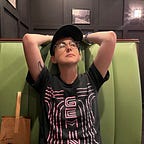Every Time the Media Failed to Turn Me Transgender
Conservatives insist that exposure to gender fluidity is transing our children. To which I say: I wish.
If you’ve paid any attention to the “debate” around trans rights in the United States, you’ve heard of “rapid-onset gender dysphoria” — or, as the real Nazis like to say, “grooming.” The idea, in brief, is that being trans is a “social contagion,” and that being around trans people, or seeing any form of gender fluidity, will immediately turn your children transgender.
Man, I wish. I started my transition at the age of thirty-seven, and though there are benefits to figuring yourself out later in life (a clearer sense of self, more autonomy, not having to rely on parental approval or insurance, etc.) like most trans people, I’ve found life after coming out to be so much better that I wish I had done it when I was young.
Where was my rapid-onset gender dysphoria? How did our permissive liberal culture fail to turn me trans? It’s not that the indoctrination was never attempted. I can name several moments from my youth which filled me with a palpable, buzzing, hypnotic sense that Gender was about to take place. Yet the inception was never completed. Here, an incomplete list of things which tried, and failed, to give me rapid-onset gender…
